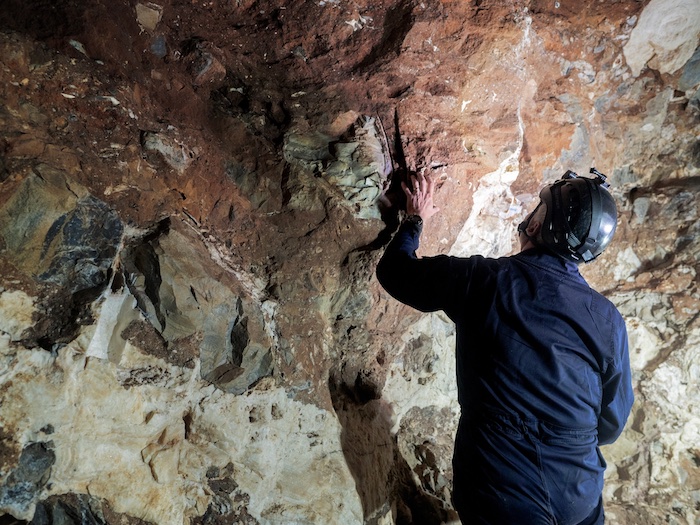— Discovery of oldest known burial site

By Nadia Barnett
In a cave in South Africa, scientists have discovered ancient burials dug by a small-brained species known as “Homo Naledi” – 100,000 years earlier than the earliest known burials of “Homo Sapiens”, disrupting the story. According to the “Washington Post” newspaper, scientific research on the theory of evolution is subjecting scientists to fierce debate.The Washington Post)
A team exploring the “Rising Star” cave northwest of Johannesburg said they found limestone walls inscribed with triangles, squares and intersecting lines. years ago.
These results were announced Press conference It was hosted by Stony Brook University in the US on the fifth of June, it appeared Two sheets Two Flags Both first editions are published in bioRxiv.
Both studies are still under scientific review before being published in the journal eLife.
💀 Pushing back the first sign of burial by thousands of years
Evidence for deliberate burial of the dead by Homo naledi@LeeRberger @Keneiloe @KabwePRQ @Anthrofuentes @Paleo_Bonegirl @stickman913 @CDWren @MarcKissel et alhttps://t.co/K9zchDTqII pic.twitter.com/XEoEQZlOjE
— MU-Peter Shimon 🀄 (@MU_Peter) June 5, 2023
These results are very exciting, and in 2021 it was Old A known burial site dating back 78,000 years belongs to a human child.
These results come after many years discovery The species, which scientists call “Homo naledi,” is characterized by its short stature (about 1.5 meters in length) and its small size, including a brain that weighs about one-third the size of a modern human. Contains both very old and relatively modern anatomical features.
Voluntary Funerals
The skeletal remains were discovered during archaeological excavations that began in 2018, and most of the skeletons found by scientists in one part of the cave date from 335,000 to 241,000 years ago, which is modern times. Humans began to appear in Africa.
Scientists found these graves in burial pits at the end of a tangle of narrow galleries, and the graves were filled with earth, which was originally used to make the pits, indicating that the bodies of these men were buried voluntarily.
However, these results caused controversy among scientists after they were announced, as their opinions differed sharply on the evidence proving that “Homo Naledi” buried his dead, and some scholars pointed out that there is no evidence that these inscriptions are thousands of years old. Old, step to inform Published by National Geographic.
The controversy reflects the degree of tension that our understanding of ancient history and new scientific discoveries periodically monitor, and if the results of the last two studies are correct, it could undermine the practice of burial. The preservation of our species, “Homo sapiens”.
Controversy
And Lee Berger, a paleoanthropologist and head of the research team, said, “People have always wondered about their position in finding another culture as complex as our own human culture … Well, we’re facing one of these now, and it’s a huge moment in human history.”
The findings open the door to the possibility of cremation among hominins with smaller brains and lower intelligence, scientists say.
This idea counters the prevailing view that awareness of death in general, and funerary rituals in particular, are uniquely human, and that these burial practices are a relatively recent thing, known to mankind over 100,000 years ago.
In a statement published by the “Science Alert” website – says Berger.scientific warning)– “We are going to tell the world that this is not true,” he concludes, “and that the symbols carved into the stones also indicate that humans were not the only ones who developed these practices.”
